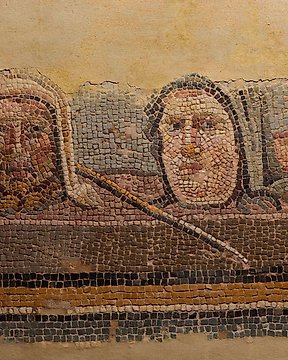
Ókori római Mozaik töredéke két színházi maszk képével. Kr.u. 2. - 3. század. szélessége 100 cm.
Nr. 84104161

Nr. 84104161

A finely crafted Ancient Roman intaglio portraying a standing female figure facing left. She is holding a long spear in one hand and a cornucopia in another. The latter item is a common attribute of Fortuna. The reverse is highly polished and undecorated. This piece is supplied with a museum-quality impression.
The term intaglio refers to a small image that has been engraved into a gemstone and usually set in a piece of jewellery, most commonly a ring. Such artistic form has its origin in Sumer in the 4th millennium BC, with the appearance of cylinder and stamp seals, whereby decorations and patterns were engraved into soft stones. During the Hellenistic period and the early Roman Empire, the art of intaglio reached its apogee, with there being a steady decline in craftsmanship in the late Imperial Rome, until a revival of interest with the Byzantine and during the Renaissance.
Measurements: Length~1.4cm, Width~1.2cm
Provenance: From a Swiss collection, 1980s onwards. Property of a North London, UK, gentleman
Hogyan vásárolhatok a Catawiki-n?
1. Fedezzen fel valami különlegeset
2. Tegye meg a legmagasabb licitet
3. Fizessen a biztonságos és védett rendszert használva